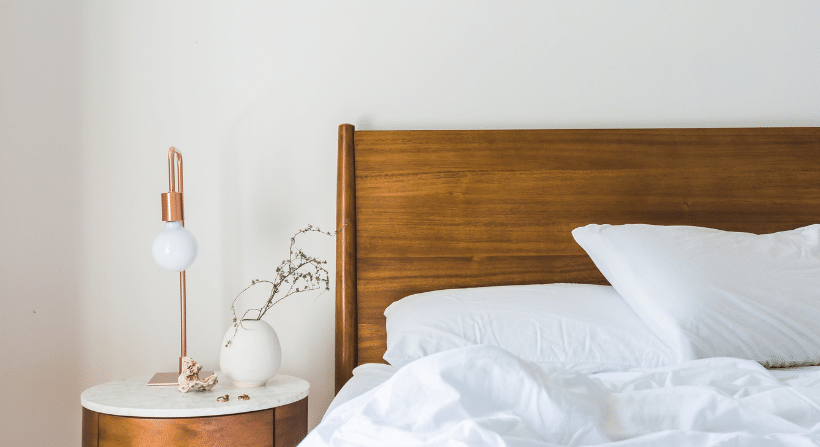Dealing with a bed bug infestation can be a stressful and challenging experience, especially when it comes to deciding what to do with your furniture. In this blog, we’ll tackle the pressing question: When should you throw away your furniture when dealing with bed bugs? From understanding the severity of the infestation to weighing the cost of treatment against replacement, we’ll explore the factors to consider when making this decision.

Join us as we navigate the complexities of managing bed bugs and furniture to ensure a safe and pest-free living environment.
When Should You Throw Away Your Furniture When Dealing with Bed Bugs?
Bed bugs, the tiny, nocturnal insects that feed on human blood, can turn your home into a living nightmare. One of the most distressing dilemmas in dealing with a bed bug infestation is deciding whether to throw away infested furniture. While disposing of furniture is sometimes necessary, it isn’t always the first or best option. Here’s a guide on when you should throw away your furniture and how to handle bed bug infestations effectively.
Understanding Bed Bug Infestations
Bed bugs are adept at hiding in cracks, crevices, and fabrics. They can infest various household items, including mattresses, sofas, chairs, and even wooden furniture. The decision to dispose of furniture should be based on the severity of the infestation, the type of furniture, and the success of treatment methods.
When to Consider Throwing Away Furniture
- Severe Infestations:
- If the infestation is extensive and the furniture is heavily infested, it might be beyond salvaging. Multiple layers of fabric and deep crevices can harbor bed bugs and their eggs, making it difficult to ensure complete eradication.
- Signs of severe infestations include numerous live bed bugs, extensive fecal staining, and a strong, musty odor.
- Damage Beyond Repair:
- Furniture that is already old, damaged, or worn out might not be worth the cost and effort of treatment.
- Structural damage or significant wear can provide ample hiding spots for bed bugs, complicating treatment efforts.
- Ineffective Treatment Attempts:
- After multiple unsuccessful treatment attempts, some items may still harbor bed bugs. If professional pest control treatments fail to eliminate bed bugs from specific pieces of furniture, it might be time to consider disposal.
- Health and Safety Concerns:
- For individuals with severe allergic reactions to bed bug bites, the ongoing presence of bed bugs can pose significant health risks. In such cases, getting rid of infested furniture might be necessary to ensure a safe living environment.
Alternatives to Throwing Away Furniture
Before deciding to discard furniture, consider these alternatives that might save your belongings:
- Professional Treatment:
- Hiring a professional pest control service is often the most effective way to handle bed bug infestations. Professionals have access to potent insecticides and specialized equipment that can penetrate deep into furniture.
- Heat Treatment:
- Bed bugs are highly susceptible to heat. Exposing infested furniture to temperatures above 120°F (49°C) for a sustained period can kill bed bugs and their eggs. Professional heat treatments can effectively treat entire rooms or pieces of furniture.
- Encasements:
- For mattresses and box springs, bed bug-proof encasements can trap bed bugs inside, preventing them from escaping and feeding. This can eventually lead to their starvation and death.
- Vacuuming and Steaming:
- Regular vacuuming and using steam cleaners on infested furniture can help reduce bed bug populations. Focus on seams, cracks, and other hiding spots.
How to Safely Dispose of Infested Furniture
If you decide that disposing of furniture is the best course of action, follow these steps to prevent spreading bed bugs to other areas:
- Seal the Furniture:
- Wrap the infested furniture in plastic or use bed bug-proof disposal bags. This prevents bed bugs from escaping during the disposal process.
- Label Clearly:
- Clearly mark the furniture as infested with bed bugs. This helps prevent others from taking and spreading the infestation.
- Follow Local Disposal Guidelines:
- Check with your local waste management services for guidelines on disposing of infested items. Some areas have specific protocols for handling bed bug-infested furniture.
- Immediate Disposal:
- Arrange for immediate pickup or transport to a landfill. Avoid leaving infested items on the curb for extended periods.
Conclusion
Deciding to dispose of furniture due to bed bugs should be a last resort, after exhausting all treatment options. While severe infestations, irreparable damage, or health risks may warrant disposal, professional treatments and preventive measures can often salvage your furniture. If disposal is unavoidable, do so responsibly to prevent further spread of these persistent pests. Take proactive steps to manage bed bug infestations effectively and restore peace to your home.
Contact Tulsa Bed Bug Exterminator today for expert guidance and assistance in dealing with bed bugs.

Recent Comments